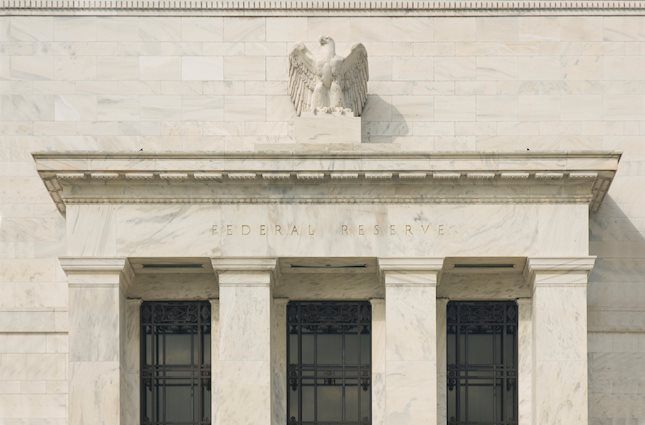- The Canadian Dollar went nowhere fast, straining against familiar lows.
- Canada is thinly-represented on the economic calendar this week.
- Key US CPI inflation data this week will dominate market flows.
The Canadian Dollar (CAD) is tepid to kick off a new trading week, circling familiar lows against the Greenback as the USD/CAD chart settles into a congestion pattern. A lack of meaningful momentum behind the Loonie has left the Canadian Dollar in the lurch, struggling to hold onto territory at the top end of a long-term consolidation pattern.
Canada is drastically under-represented on the economic calendar this week, with only low-tier data on the offering. Canadian markets are still shuttered for the Remembrance Day holiday, giving Canadian institutions a long weekend. CAD markets will return to the fold on Tuesday, with little of note on the data docket to make much fuss about.
Daily digest market movers: Holiday markets make for a quiet CAD
- Canada is taking Monday off for a long weekend as the nation observes Remembrance Day.
- Overall market sentiment is fairly bullish, but lackluster CAD is struggling to gain ground against the safe haven US Dollar.
- Loonie traders will have to wait until next week’s Canadian Consumer Price Index (CPI) inflation update for any hope of CAD-centric data drivers to push markets in either direction.
- US CPI inflation due this Wednesday will likely push additional volume into Greenback flows.
- Despite waffling inflation figures, an easing CPI print is unlikely to bolster the Loonie: lackluster economic figures in Canada amid deflating inflation figures has the Bank of Canada (BoC) scrambling to cut rates at an accelerated pace, but the lead-in time required for rate cuts to have an effect has left investors wondering if its too little, too late from the Canadian central bank.
Canadian Dollar price forecast
The Canadian Dollar (CAD) has found itself trapped in a sideways pattern against the US Dollar which has plagued the USD/CAD chart since late-2022. The CAD has weakened appreciably against the US Dollar, sending USD/CAD up the charts over 4% from September’s lows near 1.3400. USD/CAD is knocking into 1.3960, a familiar ceiling for price action since the pair rose into the region in October of 2022.
A familiar congestion pattern could see technical traders stepping in to short the Greenback against the Loonie, but investors hoping to step into CAD bidding will need some sign of strength from either the BoC, the Canadian economy, or the Loonie itself, or ideally, all three.
USD/CAD daily chart
Canadian Dollar FAQs
The key factors driving the Canadian Dollar (CAD) are the level of interest rates set by the Bank of Canada (BoC), the price of Oil, Canada’s largest export, the health of its economy, inflation and the Trade Balance, which is the difference between the value of Canada’s exports versus its imports. Other factors include market sentiment – whether investors are taking on more risky assets (risk-on) or seeking safe-havens (risk-off) – with risk-on being CAD-positive. As its largest trading partner, the health of the US economy is also a key factor influencing the Canadian Dollar.
The Bank of Canada (BoC) has a significant influence on the Canadian Dollar by setting the level of interest rates that banks can lend to one another. This influences the level of interest rates for everyone. The main goal of the BoC is to maintain inflation at 1-3% by adjusting interest rates up or down. Relatively higher interest rates tend to be positive for the CAD. The Bank of Canada can also use quantitative easing and tightening to influence credit conditions, with the former CAD-negative and the latter CAD-positive.
The price of Oil is a key factor impacting the value of the Canadian Dollar. Petroleum is Canada’s biggest export, so Oil price tends to have an immediate impact on the CAD value. Generally, if Oil price rises CAD also goes up, as aggregate demand for the currency increases. The opposite is the case if the price of Oil falls. Higher Oil prices also tend to result in a greater likelihood of a positive Trade Balance, which is also supportive of the CAD.
While inflation had always traditionally been thought of as a negative factor for a currency since it lowers the value of money, the opposite has actually been the case in modern times with the relaxation of cross-border capital controls. Higher inflation tends to lead central banks to put up interest rates which attracts more capital inflows from global investors seeking a lucrative place to keep their money. This increases demand for the local currency, which in Canada’s case is the Canadian Dollar.
Macroeconomic data releases gauge the health of the economy and can have an impact on the Canadian Dollar. Indicators such as GDP, Manufacturing and Services PMIs, employment, and consumer sentiment surveys can all influence the direction of the CAD. A strong economy is good for the Canadian Dollar. Not only does it attract more foreign investment but it may encourage the Bank of Canada to put up interest rates, leading to a stronger currency. If economic data is weak, however, the CAD is likely to fall.
Information on these pages contains forward-looking statements that involve risks and uncertainties. Markets and instruments profiled on this page are for informational purposes only and should not in any way come across as a recommendation to buy or sell in these assets. You should do your own thorough research before making any investment decisions. FXStreet does not in any way guarantee that this information is free from mistakes, errors, or material misstatements. It also does not guarantee that this information is of a timely nature. Investing in Open Markets involves a great deal of risk, including the loss of all or a portion of your investment, as well as emotional distress. All risks, losses and costs associated with investing, including total loss of principal, are your responsibility. The views and opinions expressed in this article are those of the authors and do not necessarily reflect the official policy or position of FXStreet nor its advertisers. The author will not be held responsible for information that is found at the end of links posted on this page.
If not otherwise explicitly mentioned in the body of the article, at the time of writing, the author has no position in any stock mentioned in this article and no business relationship with any company mentioned. The author has not received compensation for writing this article, other than from FXStreet.
FXStreet and the author do not provide personalized recommendations. The author makes no representations as to the accuracy, completeness, or suitability of this information. FXStreet and the author will not be liable for any errors, omissions or any losses, injuries or damages arising from this information and its display or use. Errors and omissions excepted.
The author and FXStreet are not registered investment advisors and nothing in this article is intended to be investment advice.
Recommended content
Editors’ Picks

AUD/USD plunges to near 0.6400 as weak Aussie GDP boosts RBA dovish bets
Disappointing data results from key fundamentals in Australia weighed heavily on the Aussie Dollar, sending AUD/USD to fresh four-month lows in the boundaries of the key contention zone at 0.6400.

EUR/USD holds near 1.0500 ahead of Powell speech
EUR/USD managed to clinch its second day in a row of gains, extending the recent breakout of the 1.0500 mark in response to the inconclusive tone in the US Dollar ahead of key US data releases later in the week.

Gold advances to $2,650 area as US yields edge lower
Following a consolidation phase near $2,640, Gold gains traction and rises to the $2,650 area. The benchmark 10-year US Treasury bond yield pushes lower after weak macroeconomic data releases from the US, helping XAU/USD stretch higher.

Donald Trump nominates pro-crypto Paul Atkins as next SEC Chair
President-elect Donald Trump confirmed on Wednesday that he has nominated Patomak Global Partners CEO Paul Atkins as the next Chairman of the Securities & Exchange Commission.

Four out of G10
In most cases, the G10 central bank stories for December are starting to converge on a single outcome. Here is the state of play: Fed: My interpretation of Waller’s speech this week is that his prior probability for a December cut was around 75% before the data.

Best Forex Brokers with Low Spreads
VERIFIED Low spreads are crucial for reducing trading costs. Explore top Forex brokers offering competitive spreads and high leverage. Compare options for EUR/USD, GBP/USD, USD/JPY, and Gold.